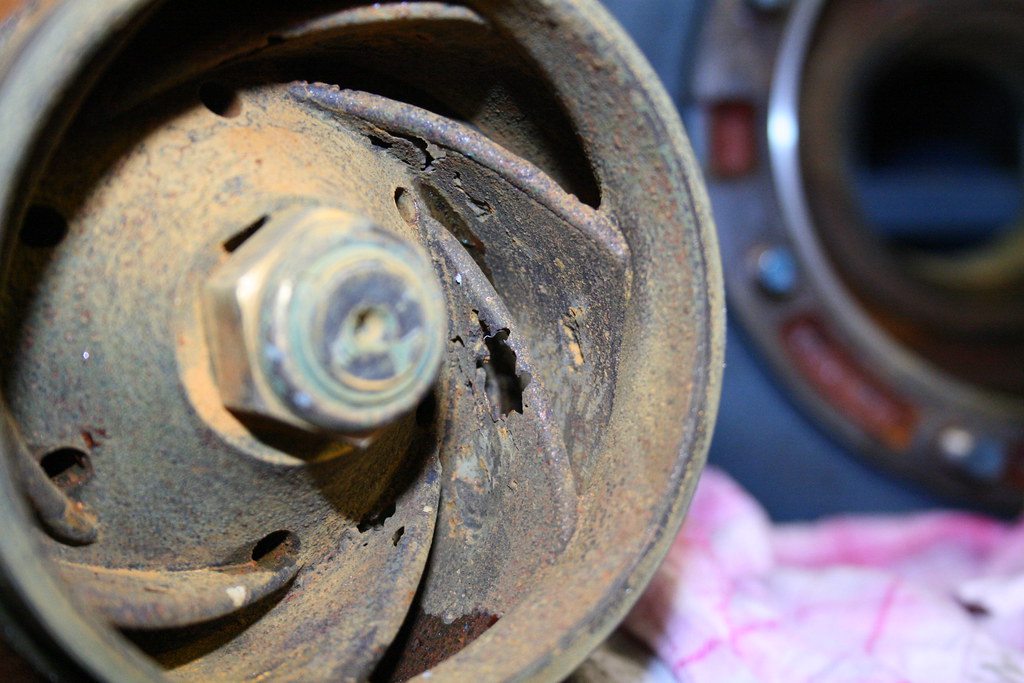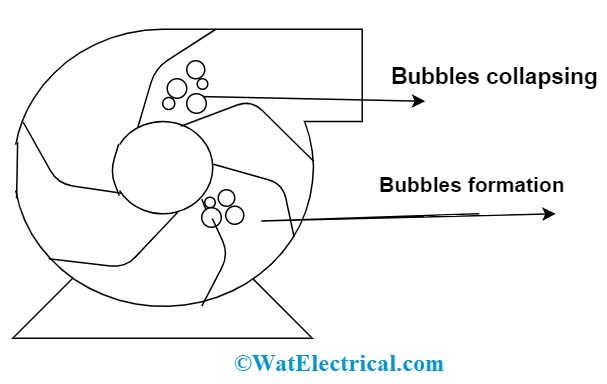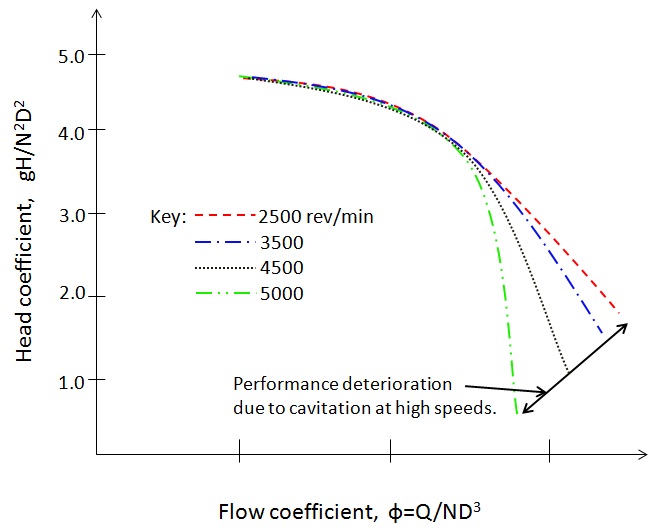Initially, the speculation of cavitation was known in the period 1754 by Euler and later on the solution to this was presented by Henry Besant in 1859. Thornycroft and Barnaby were the persons who observed the scenario of cavitation on the behind sides of propeller blades. In the context of engineering, pump cavitation is the concept that has to be considered in a high priority, because when it left unobserved, there are chances of the machine getting spoiled or showing other kinds of damages. So, we made an article allowing people to know about what cavitation is, its cause and how it can be resolved?
What is Pump Cavitation?
Definition: Pump cavitation is a detrimental problem that might eve damage superior quality of pumping systems. With the symptoms like additional noise, unconditional pump operation, and excessive energy usage, one can know that pump cavitation is the cause. But with proper care and maintenance, this issue can be simply averted. Pump cavitation can be shown as

pump cavitation
Pump cavitation happens because of the generation of air bubbles in the pump and this is due to the subjective decrement in the pressure of the moving fluid which creates a cavity at that location. Pressure variations in liquid transform liquid to vapor and the pump impeller rotation turns again vapor to liquid. Thus, there will be a movement in the air bubbles, that enhances pressure and so these bubbles instantly collapse. The breakdown of air bubbles corrodes the impeller surface area which results in damage in the pumping system. During the operation of centrifugal pumps, cavitation occurs. Cavitation in pumps has happened when the suction part head does not hold the adequacy to handle pressure values ahead of the vapor pressure and results in the decrement of NPSH value.
Causes of Pump Cavitation
There are multiple reasons those cause pump cavitation and those are stated as below:
- When the fluid at the suction side of the pump is not adequately ahead of the vapor pressure of the fluid at functional situations, then it leads to liquid vaporization and air bubbles form in a more probable way and this causes cavitation.
- The rise of fluid temperature at the suction side of the pump also enhances the fluid vapor pressure. It probably leads to a decline in the functional pressure beneath the vapor pressure range, and this scenario causes cavitation and air bubbles formation.
- The increase in liquid velocity at the suction side is usually caused by increased fluid flowrates. Depending on the Bernoulli’s principle, the surge in the liquid velocity corresponds to more velocity and lesser pressure head. Frictional pressure decrement at the suction side even increases with the flowrate increment thus reducing pressure and causes cavitation.
- Specific minimal flow is necessary for centrifugal pumps to not let them be dry as shown in the pump cavitation graph. When the fluid flow goes beneath this range, then the chance of cavitation will be increased.
- The factors like machine fittings, valves and obstructions will affect frictional pressure failure in the suction side of the pump which enhances the scope of cavitation.

cavitation-cause
Cavitation Prevention
As there are various kinds of cavitation, there are even various methodologies to avoid cavitation to happen. Let’s discuss the cavitation prevention types:
To Prevent Vaporization Cavitation
- Enhance the fluid level all across the suction side of the pump
- Raise the eye diameter at the impeller center
- Decrease the temperature ranges of the fluid, pump and all other apparatus
- Insert a booster pump inside the system which will reduce the strain levels of the primary pump
To Prevent Turbulence Cavitation
- Enhance the size of the pump suction line to lessen turbulence factor
- Make sure that all the components are functioning properly where because this might reduce the strain of the fluid flow and the volume.
To Prevent Internal Re-Circulation Cavitation
- Rise the confined discharge value of the pump and know whether there are any blockages inside the pump
- Clean out the downstream filter or any kind of garbage leftover
- Make sure that the valve is inserted properly as this is the common mistake that many systems come across.
- Know whether the discharge valve is in an open or closed position
- Handling the pump with all the above-stated step can prevent cavitation to happen and extends the life period.
Types of Cavitation
The basic and most happened types of cavitation are as below. It is more crucial to know the exact type of cavitation so that prevention can also be known easily.
Vaporization
This is also termed as deficient NPSHa or classic cavitation. This happens when the centrifugal pump exposes velocity on the fluid where it flows through the impeller eye. When there is improper functioning of the impeller, fluid might get boiled and it leads to the creation of small air bubbles.
Turbulence
When the pump parts like elbows, pipes, and filters are not sufficient for the pumping fluid, this might show the chance of creating vortexes. This directs fluid becoming turbulent and undergoes pressure variations and thus creates cavitation.
Vane Syndrome
This cavitation happens when the diameter of the impeller is large or when the surface coating is too thick. These all will increase the fluid velocity, and this leads to pressure decrement. The minimal pressure enhances the heating properties of the liquid and thus creates cavitation.
Internal Re-Circulation
Here, the discharge rates are not correct and thus the fluid re-circulates all across the impeller. The movement of fluid across maximum and minimum pressure locations results in heat development and increased velocity where the final outcome will be hot air bubbles (cavitation).
Air Aspiration Cavitation
This is the most general form of cavitation where the air in some cases air gets sucked into the pump either through joint rings or collapsing valves. When the air gets sucked in, it has no way to coming out, this creates air bubbles and so cavitation.
Discharge Cavitation
This cavitation takes place when the discharge pressure exceedingly high or less than that of 10% of BEP. The extreme pressure values create a problematic situation for the liquid to come out and so it will re-circulate all across the pump. The re-circulation of fluid between impeller and housing creates space and bubbles are formed.
With suction cavitation, the collapse of bubbles sparks huge shockwaves, thus causing premature wear of housing and impeller. To the extremity, this type of cavitation might breakdown the impeller shaft.
Suction Cavitation
Also called classic cavitation which happens when there is minimal pressure or extreme vacuum cases. Pumping of the fluid moves into the centrifugal pump and this reduces the pressure. In a few situations, extreme pressure levels allow fluid to get vaporized when the local pressure values are lower than that of saturation pressure for the pumped liquid. Air bubbles will be formed at the impeller eye and consequently, these bubbles will move in the direction of maximum pressure. This creates severe destruction to the whole parts of the pump.
The causes why suction cavitation has happened are:
- The movement of the pump is very far from the pump curve
- Obstruction in the pipes
- Blocked strainers or filters
Pump Cavitation NPSH Formula
NPSH is the Net Positive Suction Head where it is stated as the crucial difference across the inlet pressure values together with minimal pressure values internal to the pump. At the pump primary side, the pressure gets decreased before it increases the explosion face towards maximum level than that of intake pressure.

graphical-representation-of-cavitation
NPSH is calculated as
NPSH = PT – Pv/ ρg
Where ‘PT’ corresponds to total inlet pressure
‘Pv’ corresponds to the fluid vapor pressure
‘P’ represents a density
‘G’ acceleration of gravity
FAQs
1). How do you fix pump cavitation?
Each kind of cavitation has a fixing method and the basic way of avoiding cavitation is to go with a good manufacturing design.
2). How can you reduce cavitation immediately but temporarily?
The temporary and immediate removal of cavitation is to decrease the motor speed and implement the impeller inducer.
3). How do you create cavitation?
When there is a sudden reduction in the fluid, cavitation happens
4). What causes cavitation in the hydraulic system?
Cavitation in the hydraulic system corresponds to the formation and breakdown of vapor bubbles.
As cavitation is the most common problem in many of the pumping systems, it is more necessary to go with proper care and maintenance to avoid the problems behind cavitation. At the time of manufacturing the pump, the NPSHa value might be known simply. So that NPSHa can then be related to that of NPSHr for various pump kinds. when NPSHa value is low, it is more streamlined to go with design changes, other than working on other factors. So, selection holds the best option to be way from cavitation problems. The concept that needs to be known further is What are the best options to avoid pump cavitation?